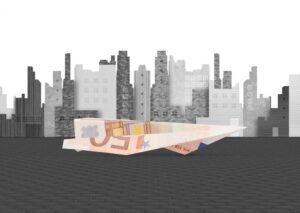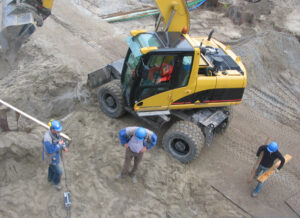The construction sector spends money to make money, therefore costs are an inevitable component of the process. However, despite our best efforts, significant operating costs are making it more difficult to compete and, in some cases, jeopardizing the quality and value of projects supplied to clients.
Added to this are rising administrative expenditures, salaries, rent, and other expenses, all of which throw the red marker of some businesses into overdrive. To remain profitable and competitive, one apparent answer is to cut operating costs.
If you are facing issues with your operating costs, here are some construction cost reduction techniques to help you out.
What are the Operating Costs in the Construction Industry?
Before we look at how to cut operating costs, let’s define them quickly so that you can understand what we’re talking about.
Operating costs are expenses incurred by a company when it is in operation. These expenses may be fixed or fluctuate. Rent, labour, utilities, administration costs, upkeep, and repairs are just a few examples of common operating costs. Construction Cost Consultant can provide estimates, and advice regarding the cost of construction works
Life Cycle Costing During the Conceptual Stage
LCC (life cycle costing) is a long-term, continuous cost projection tool that estimates all current and future costs involved with the construction and operation of a structure during its estimated lifespan.
It entails a careful examination of three factors: the cost of ownership, the discount rate applied to future expenses in order to represent current costs (net present value), and the time period for which these costs are applicable.
The goal of LCC is to give several options that will lower costs and improve the quality of products and services offered on a building project. The method can be used to calculate operating and maintenance expenses, the projected useful life of a piece of equipment or a structure, and financing costs, among other things.
According to the US General Service Administration, having a baseline reference alternative that provides a viable system, meets all project criteria, and has successful design characteristics is a good idea.
The baseline should have the lowest price once the stated standards are met. The goal is to assess other options by substituting designs, materials, building technologies, systems, building features, and energy-related building features to provide a holistic understanding of the numerous variables and their impact on the asset’s value.
The LCC process is a valuable construction cost reduction technique that involves a large number of decision-makers, which, predictably, increases time consumption and labour intensity. Despite these drawbacks, the technique is well-known throughout the world for its success in improving asset planning, construction, and service life. It does not use the starting costs as a criterion.
Decisions made during the design phase have a direct impact on the service term, where operational expenses are known to reach astronomical levels of 80-85 percent of life cycle costs. Owners and organizations might anticipate significant savings by adopting design decisions that enhance the value of the structure or equipment in the long run.
Innovation Equals Improvement
Implementing cost-saving techniques in planning design and construction is one of the quickest ways to cut down your operating costs.
Today’s construction ecosystem incorporates more technical advancements at every level of a project. This is a step in the right way in addressing the industry’s “intractable productivity problem” and excessive operational costs, which have been eroding revenues for years.
One does not have to look very far in the digital realm to find an answer to this issue. For example, digital twin technologies combined with the Internet of Things and drones, satellite imaging, LIDAR, and photosphere-based solutions. These technical improvements make it feasible to have real-time information and data, which speeds up decision-making, reduces the need for design redo, and increases a team’s overall efficiency.
It’s easy to understand how this works over time: less rework = savings, more productivity = savings, and quicker and more efficient decisions = savings. Overall, when the proper technology meets the right business process through innovation, it’s a win-win situation.
But let’s take it a step further by looking at a seemingly simple task that was once plagued by human error, redo, wasted time, and the list goes on: manual construction takeoff.
The procedure is streamlined by using software to automate numerous operations, from uploading the blueprint or a scanned copy of the design file to applying price information. As a result, operating costs are lower, productivity is higher, efficiency is higher, and construction cost estimates are more accurate.
Implement Long-Term Maintenance Strategies
Buildings and construction equipment would never need to be repaired or maintained in an ideal society. However, buildings require regular maintenance to guarantee that they continue to contribute value; equipment, on the other hand, must be maintained according to factory specifications as part of another optimal plan.
Both result in long-term costs that may arise if necessary actions to maintain an adequate maintenance plan are not taken.
To avoid excessive maintenance costs, unscheduled downtime, interruption, and dangers, specific maintenance techniques should be implemented in a component or its subsystems. But how can you determine if you need preventative maintenance, predictive maintenance, or reliability-focused maintenance?
Preventative and predictive maintenance are important in the construction sector. The former ensures a routine maintenance plan, while the latter focuses on anticipating equipment failure before it happens using data from equipment, sensors, vibration analysis, or a combination of all three.
More complicated, reliability-centred maintenance entails detecting failure modes for a specific system before they occur, which is a time-consuming yet costly option.
The type of facility and equipment under consideration determines the maintenance method to be used. Long-term running expenses are reduced by a combination of diverse maintenance tactics directed by a detailed plan that considers timetable, previous repairs, estimated life cycle, manufacturer’s requirements, and cost-effective alternatives.
Lean Construction
Lean construction is a relationship-focused production management method that optimizes the construction process by removing waste, as explained in The Basics of Lean Construction.
Treating projects as production systems, maintaining flawless coordination, and viewing projects as collective enterprises are three opportunities that arise as a result of this. Construction waste decreases as a result of lean thinking, which is founded on five key principles:
- Identify value.
- Make value-creating steps flow.
- Map the value system.
- Strive for perfection.
- Gravitate towards the pull of the customer.
Source the Materials
You cannot always find cost-saving techniques in the planning design and construction stages, which is why it is important to implement other methods to reduce your operating costs. When it comes to fixtures, doorknobs, and even cabinetry, you can often locate cheaper alternatives on your own rather than going through a contractor.
If you wish to source any of the supplies yourself, most contractors will cooperate with you; just make sure you agree before the project begins.
If you’re building or upgrading a kitchen, for example, you might be able to discover lower-cost countertops through home improvement stores rather than through your contractor. You can also use salvaged materials in your project if you hunt for them.
If you live near a Habitat for Humanity ReStore, it’s worth stopping by to check what they have. There are usually gently used parts such as shelves and fixtures available at a significant discount.
Don’t wait until the project is underway to select what you will and will noImplement Long-Term Maintenance Strategiest be sourcing yourself. Instead, before the project begins, get down with your contractor and go over the budget line by line.
If they’re putting anything together for you, make sure you know when they’ll need each piece on-site, what dimensions they’ll need, and what the labour expenses will be.





